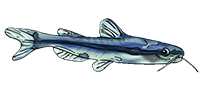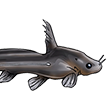/siluriformes/loricariidae/panaqolus/maccus/1.jpg)
/siluriformes/loricariidae/panaqolus/maccus/2.jpg)
/siluriformes/loricariidae/panaqolus/maccus/3.jpg)
/siluriformes/loricariidae/panaqolus/maccus/4.jpg) Juvenile in foreground, adult female in background
Juvenile in foreground, adult female in background/siluriformes/loricariidae/panaqolus/maccus/5.jpg) Pair, gravid female to left
Pair, gravid female to left/siluriformes/loricariidae/panaqolus/maccus/6.jpg) Close-up of head
Close-up of head/siluriformes/loricariidae/panaqolus/maccus/7.jpg) Male (left) / female (right) differences
Male (left) / female (right) differences/siluriformes/loricariidae/panaqolus/maccus/8.jpg)
/siluriformes/loricariidae/panaqolus/maccus/9.jpg)
/siluriformes/loricariidae/panaqolus/maccus/10.jpg)
/siluriformes/loricariidae/panaqolus/maccus/11.jpg) Fry
Fry/siluriformes/loricariidae/panaqolus/maccus/12.jpg) Dorsal view
Dorsal view/siluriformes/loricariidae/panaqolus/maccus/13.jpg) Ventral view
Ventral view/siluriformes/loricariidae/panaqolus/maccus/14.jpg)
/siluriformes/loricariidae/panaqolus/maccus/15.jpg)
/siluriformes/loricariidae/panaqolus/maccus/16.jpg)
/siluriformes/loricariidae/panaqolus/maccus/17.jpg) Fry, 11 days old, 7 mm SL
Fry, 11 days old, 7 mm SL/siluriformes/loricariidae/panaqolus/maccus/18.jpg) Male
Male Video
Video/siluriformes/loricariidae/panaqolus/maccus/20.jpg) Ventral view (female)
Ventral view (female)/siluriformes/loricariidae/panaqolus/maccus/21.jpg)
/siluriformes/loricariidae/panaqolus/maccus/22.jpg) Habitat: Driftwood tangle
Habitat: Driftwood tangle/siluriformes/loricariidae/panaqolus/maccus/23.jpg) Close-up of mouth
Close-up of mouth/siluriformes/loricariidae/panaqolus/maccus/24.jpg)
/siluriformes/loricariidae/panaqolus/maccus/25.jpg) Juvenile
Juvenile/siluriformes/loricariidae/panaqolus/maccus/26.jpg)
/siluriformes/loricariidae/panaqolus/maccus/27.jpg) Adult
Adult/siluriformes/loricariidae/panaqolus/maccus/28.jpg)
/siluriformes/loricariidae/panaqolus/maccus/29.jpg) Red pectoral spine after territorial fight
Red pectoral spine after territorial fight
| Scientific Name | Panaqolus maccus (Schaefer & Stewart, 1993) |
| Common Names | LDA022, Clown Pleco L104, L162, Clown Panaque, Klovnsugemalle (Denmark), Maccus-Panaqolus (Germany), Ringlet Pleco |
| Type Locality | Río Las Marinas, trib. of Río Portuguesa, Río Orinoco basin, ca. 9°05'N, 69°40'W, Estado Portuguesa, Venezuela. |
| Synonym(s) | Panaque maccus |
| Pronunciation | pan ack oh luss - MAK uss |
| Etymology | Panaqolus: Inelegantly derived from the indigenous term Panaque and in a form that infers a smaller size than that genus. From the Latin maccus, for clown or buffoon, in reference to the common name "clown plecostomus" widely used by aquarists for this species. |
| Articles | |
| Size | 88mm or 3.5" SL. Find near, nearer or same sized spp. |
| Identification | A detailed account can be found in the Catfish of the Month article (link below). The species is sometimes confused with L448 (LDA068), which is very similar, but grows larger. The main key for distinguishing them is that juvenile L448 have stripes/squiggles/scribes on the head, which only appear in mature Panaque maccus. The mature size of L448 can be over 100mm, something not seen in P. maccus. |
| Sexing | Like all members of the genus, males grow elongated interopercular odontodes during the breeding season. Males develop noticeable odontodes along the dorsum (back of the body) as well. Males develop small pointed genital papillae, whereas mature females will have large, rounded, swollen papillae. Additionally, gravid females have noticeably wider bodies between the pectoral and pelvic fins when viewed from above, compared to males. |
| Distribution | South America: Apuré and Caroni River basins in Venezuela. Orinoco (click on these areas to find other species found there) Login to view the map. |
| IUCN Red List Category | Least Concern , range map and more is available on the IUCN species page. Last assessed 2020. |
| pH | 6.8 - 7.6 |
| Temperature | 23.0-28.0°C or 73.4-82.4°F (Show species within this range) |
| Other Parameters | P. maccus is found in Andean whitewater rivers flowing through the Llanos into Rio Orinoco. The aquarium water should be clear in colour with neutral values. Measurements taken at the Rio Tinaco in the dry season were temperature 80°F, pH 7.5, and fairly hard at 3,000 mu. In the wet season, the water is cooler, softer and has a neutral pH due to the heavy rains. |
| Feeding | A wood-eating fish, the tank should be decorated with several different types of driftwood. These fish really like to have something to chew on. Squash, cucumber, and other vegetables should be readily available to them (yams are a favourite). Supplement two to three times weekly with frozen foods. User data. |
| Furniture | The Biotope: P. maccus are only found amongst driftwood tangles close to the banks in the main river channels. Their striped brown and cream coloured body provides excellent camouflage in this environment. Place various types and lengths of driftwood at slanting angles from the back of the tank to the front. The back and sides of the tank should be covered with a dark background. Use sand or fine gravel that is a red-brown in colour for the substrate. Hide the spawning caves along the back of the tank behind the driftwood. |
| Compatibility | A peaceful fish well suited to the community tank provided it has driftwood. The tank must have good mechanical filtration as these fish produce lots of waste from their steady diet of wood. |
| Suggested Tankmates | Other loricariids, small cichlids and tetras. In a small tank (15-20 gallons) add a school of small tetras. Silver hatchet tetras were common in the Rio Tinaco. A larger tank can house a community of wood eating loricariids. Other loricariids caught side by side with P. maccus included: Hypostomus plecostomus, Hypostomus emarginatus (L 153), Hypostomus plecostomoides (L166), L092, Hypoptopoma, Otocinclus, Lamontichthys llanero, and Glyptopterichthys (L154). A tank with this many wood-eating loricariids requires heavy filtration and frequent large water changes. |
| Breeding | The fish should be maintained for two months under dry season conditions (see above) with thrice weekly feedings of frozen foods. In preparation for breeding, add a power head and air stone to the tank, unplug the heater, and begin making 20 percent daily water changes with cool rain or reverse osmosis water. The temperature should be allowed to fall to 70-72F. After four water changes, plug the heater back in and wait for the spawn. If, after one month, the fish have not spawned start the process over again. It may take a few cycles to get the fish spawning. Provide various sized spawning caves made from PVC or slate. The caves should be just large enough to allow the female (which is larger) to squeeze in and five to six inches in length. See also this breeding article in Shane's World. |
| Breeding Reports | There are 10 breeding reports, read them all here. |
| Reference | Ichthyological Exploration of Freshwaters v. 4 (no. 4), pp 335, Figs. 18-19. |
| Registered Keepers | There are 548 registered keepers, view all "my cats" data. |
| Wishlists | Love this species? Click the heart to add it to your wish list. There are 16 wishes to keep this species, see who wants what. |
| Spotters | Spotted this species somewhere? Click the binoculars! There are 94 records of this fish being seen, view them all. |
| Forum BBCode | |
| Search for P. maccus | |
| Look up P. maccus on AquaticRepublic.com | |
 | Look up P. maccus on Fishbase |
 | Look up P. maccus on Encyclopedia of Life |
 | Look up P. maccus on Global Biodiversity Information Facility |
| LFS label creator ARN ref:1.4.762.734 | |
| Last Update | 2025 Jan 01 12:14 (species record created: 2001 Nov 17 00:00) |




